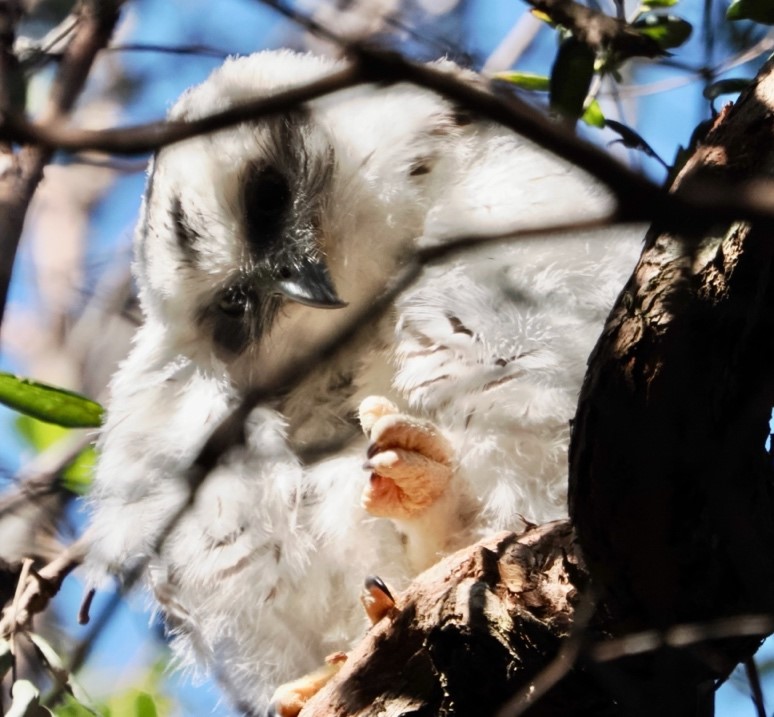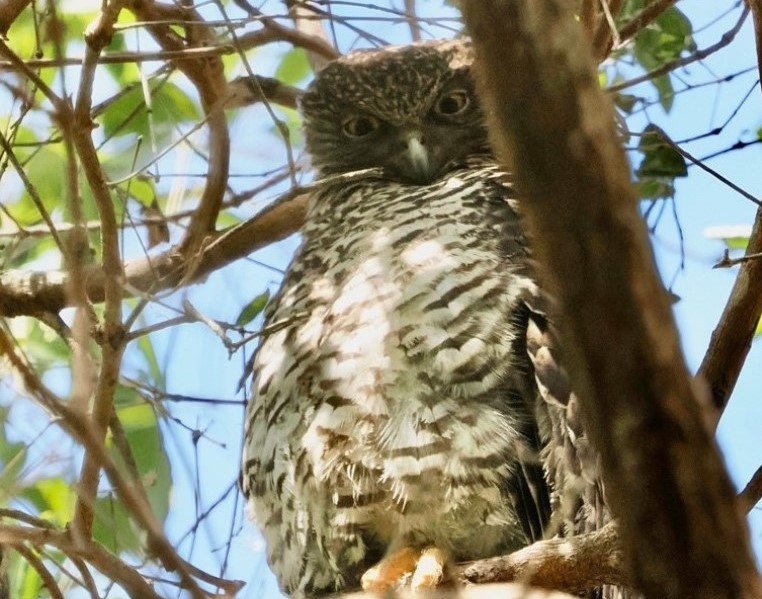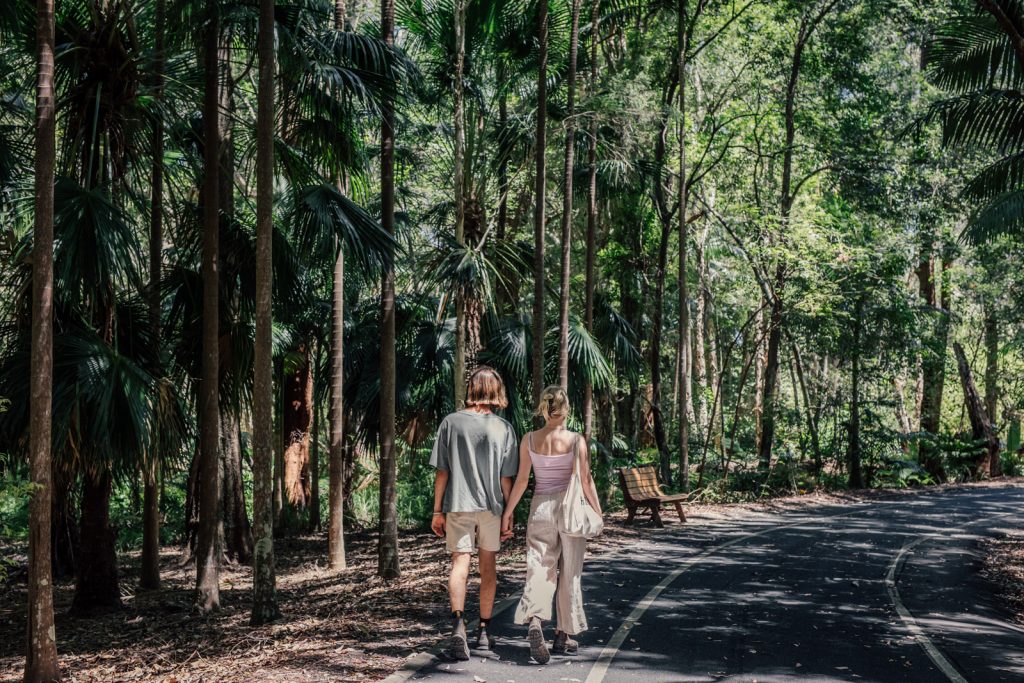Why do Powerful Owls choose to raise their young in the botanic garden at the centre of Coffs Harbour city?
The short answer is about how everything in nature is connected. The long answer starts with understanding the home range of the endangered Powerful Owl (Ninox strenua) can cover thousands of hectares extending into the hills, gullies and mountain areas behind Coffs Harbour. However, the 20-hectare Coffs Harbour Botanic Gardens offers some essential home comforts which entice the owls back each year.
About the Powerful Owl
The Powerful Owl is the largest of the Australian owls, with a head-body length of up to half a metre (50-60cm) and a wingspan of over one metre (and up to 1.5 metres). They have muscular yellow feet with massive sharp claws called talons to capture and hold their prey. The adult owls form long-term breeding pairs and live together for up to about 30 years or more. They have home ranges of about 400ha to 4,000ha and prefer living in wet forests and sheltered gullies.
The owls begin to mate from autumn and breed through mid-winter, usually laying two dull white eggs. The male provides food, and the female incubates and broods the young. The eggs hatch in about 40 days, and the fluffy white chicks fledge (ready for flight) around 6-8 weeks. The chicks stay with the parents for at least a few months and sometimes up to one year before leaving to find a new territory and a mate.
The male owl has a deep, soft, far-carrying double hoot, whoo-hooo, with each note lasting a few seconds, broken up by a brief silence. Owl duets are often heard at the onset of breeding.

My Home. The Forest
The first home comfort for the owls is the old-growth trees in the retained natural forest at the heart of the garden. The old trees offer the large nesting hollows required by these very large owls. Often these hollows are formed when the top part of the tree trunk has broken off. Nearby these nesting sites are thicker foliage rainforest trees which are ideal cover for the owls to roost in by day. The owls need thick foliage to hide in by day so they can avoid harassment by other smaller birds fearful of the owl’s predatory habits.
The second vital factor is the availability of food, mostly in the form of possums and gliders. Recent fauna surveys at the garden have revealed a high population of Ring-tailed Possums and Squirrel Gliders on which the owls dine out, along with a range of other prey items, including bats and birds.

Exotic Treats
In turn, the high number of possums and gliders in the natural forest area of the botanic garden is most likely due to the wide range of plants in planted gardens all around the natural forest in the botanic garden. This includes Australian native plants, such as the Tree Waratah (Alloxylon flammeum) from other states, as well as exotic plants from other countries. These plants flower and fruit at different times of the year, giving the possums and gliders a variety of abundant food sources over a broad period of time. The old-growth trees also provide these little tree-dwelling marsupials plenty of places to hide during the day and raise their young.
So, in summary, a wider variety of plants offers more food for tree-dwelling marsupials, which in turn offers more food for apex predators like the Powerful Owl. An example of how nature is connected in complex inter-relationships.

Written by G Tupper.
